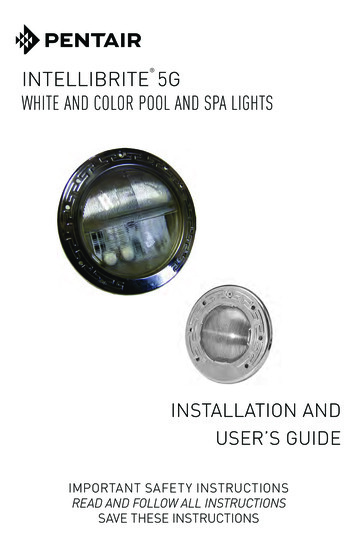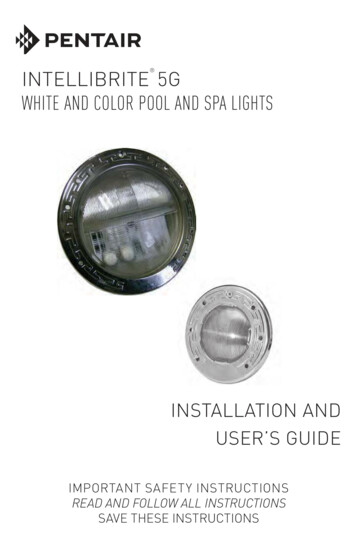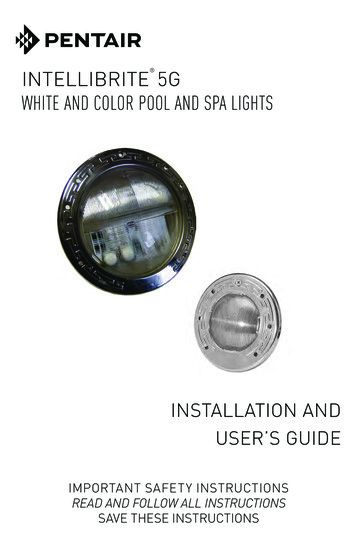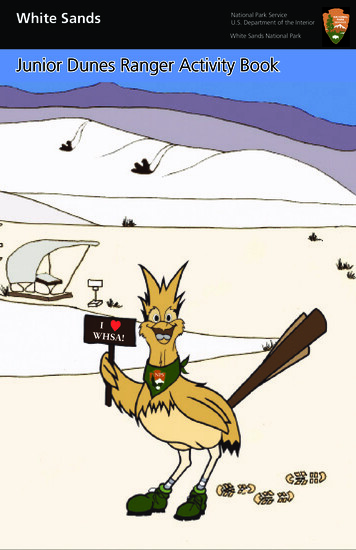
Transcription
White SandsNational Park ServiceU.S. Department of the InteriorWhite Sands National ParkJunior Dunes Ranger Activity BookI 3WHSA!NPS
Become a Junior Dunes Ranger!Hi!Welcome to White Sands, friends! Myname is Riley, and I am excited to share myfavorite place with you today. We are goingto have a great adventure exploring andlearning about White Sands, the world’slargest gypsum dunefield. My book hasactivities that are especially made for youdepending on your age.Kit Fox: Ages 6-8Jackrabbit: Ages 9-12Bobcat: Ages 13 and upWhen you are finished with your activities, please return your book to apark ranger in the visitor center to be sworn in as an official White SandsJunior Dunes Ranger! If you have any questions, please ask a park ranger.Let’s explore White Sands!Parents: This is a family program. Feel free to help your aspiring JuniorRanger. We hope that your whole family learns about the park.Are you on a tight timeline and can’t return your book today? Not a problem. Mailin your book to the address below and a ranger will take a look at it.Address: White Sands NP, PO Box 1086, Holloman AFB, NM 88330.
Recording Your MemoriesAs you explore White Sands, write or draw something in the journalbelow that you will want to remember about your visit today.3
Having Fun and Being SafeLeave No TraceSafety Tip!Lightning canstrike up to tenmiles away froma storm. Whenthunder roars,go indoors!4
Riley loves being outside and having fun! She knows the best way to enjoyWhite Sands is to follow a few safety tips. Find and circle all the safe waysRiley and her friends are enjoying the dunes in the image below.Riley’s safety tips:Drink lots of waterBe prepared for your hikeThrow away trash in a trash canKeep pets on a leashWear a hat, sunscreen, & sunglassesHike with a friend5
Solving Riley’s RiddlesRiley wrote a few riddles about her friends. Use the pictures below to helpsolve Riley’s riddles. Fill in the blank with the number of the animal belowthat matches the riddle.My blood is cold, my rattle boldIf I’m in sight, stay clear! I bite!But worry not; the taste I’ve gotIs for eggs, small birds, and mice.By day I sleep, by night I creepTo gather my favorite seeds.I blend in at night to avoid any fights –White fur makes me hard to see!Who am I?Who am I?Eight legs have I, eight eyes to spy,A trail my spinner leaves.My fangs are meek, and only seekTo munch bugs smaller than me.White I am not, so I’m easy to spotAs I crawl along the sand.Stink I have plenty, so don’t try to pet me!Respect I must command.Who am I?Who am I?My beak is long, it’s very strong,Just ask the food I eat.I can fly up in the sky,And run fast on my feetMy ears are pointy, tipped with black;For my short tail I’m named.I leave no claw marks in my track;As a stealthy hunter I’m famed.Who am I?Who am I?1. Western Diamondback Rattlesnake4. Darkling Beetle62. Bobcat3. Greater Roadrunner5. Apache Pocket Mouse6. Tarantula
Discovering Who Lives HereRiley made a list of plants and animals that live in her White Sandsneighborhood. Use the words in the word bank to fill in the boxes below.Word Bank:BADGERKIT FOXCACTI OWL BEETLEMOUSEHAWK RAVEN LIZARDSNAKEWHITESANDS7
Looking for ShapesRiley is very good at finding shapes in nature like finding shapes in clouds.Have you ever seen shapes in the clouds? What shape do you see in thecottonwood leafor in the cane cholla?Find your own shapes in nature. Draw at least two shapes below thatyou find on your adventure today.8
Meeting a RangerRiley has a lot of park ranger friends, and each one of them has a differentstory on how he/she decided to become a park ranger.Ask one of Riley’s ranger friends why he/she became a park ranger. Writehis/her response below.Riley knows she is in a national park when she sees the National Park Servicearrowhead. Have you seen an arrowhead? If not, look around the visitorcenter or on the front cover of this book.Each of the pictures in the arrowhead, like the mountain, mean somethingimportant. Draw your favorite part of the arrowhead below. Why did youchoose to draw that item? Write your response next to the arrowhead.9
Finding Your WayOne of Riley’s safety tips is to always know where you are. Help Riley findher way around the visitor center and answer the activity on the next page.Visitor Center MapParking Lot5Gift e PlantGardenLet’s go!Parking Lot10
Find the numbered items on the map to the left, then answer thestatements below.1. Native Plant Garden. Name two plants and how they were/areused by American Indians.2. Park Store. List the items that could be used to help you learnabout White Sands.3. Theater. You can watch the orientation video about the park.Did you learn anything about White Sands in the video thatsurprised you?4. Courtyard. Read some of the signs. List one new fact oranything interesting that you found in the courtyard.5. Gift Shop. There are many handcrafted items for sale in thisstore. Name one artist, what he/she made, and where he/sheis from.11
Dining in the DesertA food chain shows how each living thing gets its food. Some animals eatplants, and some animals eat other animals. Plants are called producersbecause they combine sunlight, water, and carbon dioxide in a processcalled photosynthesis. Through photosynthesis, plants produce oxygen andcarbohydrates—a simple sugar (food). Animals cannot make their own foodso they must eat plants and/or other animals. They are called consumers.Consumers come in three tiers, primary, secondary, and tertiary. Primaryconsumers eat only plants (herbivore). Secondary consumers can eat bothplants and other animals (omnivore). Tertiary consumers eat only otheranimals (carnivore). Then there are decomposers (bacteria and fungi) thatfeed on decaying matter.Unscramble the letters to fill in the blanks with the correct word. Use theword bank on the right if you need help.Soil, , (aibctera) and fungi capture nitrogen from the airand make it (busela) for plants. Otherwise, most desertplants could not grow.Plants like the (uyacc) and (nidain) ricegrass provide food and shelter for moths, ants, (orgaknoa)rats, Apache (oktpce) mice, and other animals. Theseplants are called (rmpiyar) producers because all life onthe dunes (pnededs) on them.Spiders, (cropsonsi), and lizards eat insects.Badgers, (eyscoto), kit foxes, and snakes eat mice andother (stderon).12
Tertiary ConsumersAmerican BadgerSecondary ConsumersWestern DiamondbackRattlesnakeLoggerhead ShrikePrimary ConsumersKangaroo RatBlack Tail JackrabbitApache Pocket MouseProducersIndian Rice GrassSkunk Bush SumacSoaptree YuccaDecomposersFungiWord ketdependsprimaryindiankangarooDarkling BeetleCyanobacteriaWhat would happen to the badger population if thepocket mouse and kangaroo rat caught a disease andmany of them died?13
Transforming Rock into Sand and DunesRiley has a question for you. Where did all this gypsum sand come from?This activity will help you answer Riley’s question.Take a look at the exhibits in the museum and label the three white arrows onthe map below as either water or wind.Draw a selenite crystal14Draw coarse sandDraw fine sand
Looking at a map of Dunes Drive below, label the map using thenumbers next to the words below.Word Bank:1.Playa Trail4.Alkali Flat Trail2.Interdune Boardwalk5.Amphitheater3.Dune Life Nature Trail6.Backcountry TrailN15
Exploring the Soaptree YuccaOne of the most common plants at White Sands is the soaptree yucca. Thisyucca is one of only four plants that can grow on the moving dunes. Theplant is able to do this because of its ability to grow through the dunes asthey move. The other amazing thing about the soaptree yucca is that everypart of the plant can be used in some way.Riley wrote several interesting facts about the soaptree yucca below. Usethe words in bold to fill in the boxes to the right.The yucca has beautiful white flowers that bloom after it rains. Theflowers can be eaten.The flowers grow on flower stalks that move water through the plant.These stalks can be used as walking sticks.The leaves of the yucca are called bayonet leaves because they are sosharp and pointy. The sharp tips can be used as needles.The yucca produces thousands of seeds that provide food for mice andother rodents. Humans can also use the seeds to make a black dye.The taproot finds water in the gypsum to keep the plant alive. The rootcan be used like a potato but make sure to remove the toxic skin.Did you Know?Another cool part of the soaptree ishow the plant is pollinated. Yuccasof all types are pollinated by yuccamoths. These moths blend in to thecoloring of the flower so they can bedifficult to see.16
Did you Know?Moths and butterflies arein the same order of insect(Lepidoptera). Butterflies area specialized group of mothsthat fly during the day.17
Meeting the DunefieldDear Junior Dunes Ranger,Let me introduce myself! The white gypsum sand you feel in betweenyour toes as you walk barefoot on a dune is a part of me. I wanted totake the time to tell you my story and how I ended up here.My journey started when I was gypsum mineral dissolved in thePermian Sea about 250 million years ago. Life was much different then.Millions of years later, the Earth’s tectonic plates started to shift andcollide. The sea level rose and fell, and I was pushedup in themountains you see around you today. About 10,000 years ago, Iwas dissolved by rain and snowmelt, and I washed down into a lake andevaporated into my new form, selenite crystals!Life as a crystal was nice. Wind and water broke pieces of the crystalsdown into smaller particles and they hitchhiked with thewindacross the basin to form me, the dunefield, that you are visiting!Most people who visit for the first time are surprised by the great varietyof plants and animals that survive and thrive in the unique environmentcreated by my dunes. Scientists from around theworld come hereto study me, the dunefield, and my friends, the plants and animals. Theanimals living here now are only the latest in a long parade of creatureswho have adapted to massive changes in geology and climate. Fossilizedfootprints of dire wolves, ancient camels,mammoths, smilodons,and giant ground sloths are all hidden within my sand!18
If you divide the earth’s geological history into twelve hours on aclock,I would have surfed in the Permian Sea about three hours ago, watchedthe dinosaurs about one hour ago, and met you, the humans during thelast minute. I want to welcome you, the newcomers of life on earth, to thisamazing planet!I’ve watchedhumans for a while now, and I have learned thatpeoples’ capacity to care about and preserve the environment hassometimes been overshadowed by their ability for destruction andcarelessness. Humans have great power on this planet. In order totake care of my friends, the plants and animals, for many generations tocome, humans must use their power and intelligence wisely. Will you bea good caretaker of the earth and my sand, plants, and animals? At thebottom of this letter let me know how you can be a good caretakerof the earth.Sincerely,The Dunefield19
Holding the Dunes TogetherOne of Riley’s safety tips is to drink plenty of water. Water is just asimportant for the dunes as it is for us. Without water, the dunes wouldblow away. Water is the glue that holds the dunes in place. Throughout acalendar year the water goes through all steps of the water cycle.Look at the diagram below. It shows the four major steps of the watercycle. Label each process in the water cycle using the numbers next to thewords and then circle one or more of the processes that you observe inthe dunefield.Word Bank: 1.collection 2.precipitation3.evaporation 4.condensationPrecipitation - Rain or snow coming down from clouds.Evaporation - When puddles on the ground disappear as the sun heats up the water.Collection - Water that pools in low lying areas.Condensation - As water evaporates, the moisture condenses and forms clouds in the sky.20
When you are in the dunes, do the following actions andanswer the questions below.Touch the sand on the surface. What did it feel like? Was it hot orcold?Dig down a few inches in the sand. What is the difference betweenthe top of the sand and down a few inches? What do you thinkmakes this difference?Did you Know?This illustrationshows us thattwo feet below thesurface, in a lowarea, you will findour water table,which is veryunusual for a desert.21
Nature and Geology ChecklistThis is a checklist of some of Riley’s favorite things. As you visit the park,check off any of them that you find. Some of the critters only come out atnight so don’t be discouraged if you can’t find them all.MammalsCoyoteAmerican BadgerApache Pocket MouseKit FoxKangaroo RatBlacktail JackrabbitReptilesGopherSnakeBleached EarlessLizardWesternDiamondbackRattlesnakeLittle striped WhiptailGeologyGypsum Rock22Plant PedestalSandSeleniteCrystal
Did you see something that’s not on the list? Draw ordescribe it in the space below. Ask a ranger if he can helpidentify it.BirdsBarn tula Hawk WaspInsectsTarantulaDarkling BeetleScorpionCottonwoodTree LeafSoaptreeYuccaPlantsIndian Rice GrassSkunk Bush Sumac23
Junior Ranger PledgeI am proud to be a Junior Ranger atWhite Sands National Park. I will continue to learnabout nature, and all people, so we can worktogether to protect our national parks and theplaces we live.Certificate of AchievementThis certifies thathas met the requirements of aWhite Sands Junior Dunes Ranger.Ranger Signature
Junior Dunes Ranger Activity Book. Hi! Kit Fox: Ages 6-8 Jackrabbit: Ages 9-12 Bobcat: Ages 13 and up Welcome to White Sands, friends! My name is Riley, and I am excited to share my favorite place with you today. We are going to have a great adventure exploring and learning about White Sands, the world's . Riley loves being outside and .
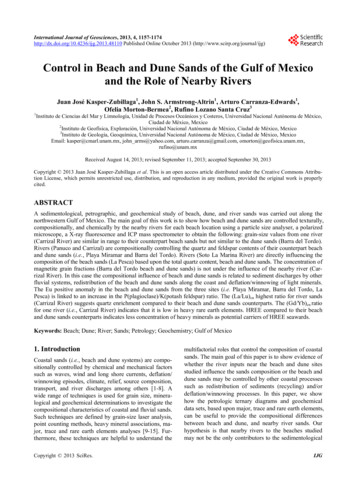


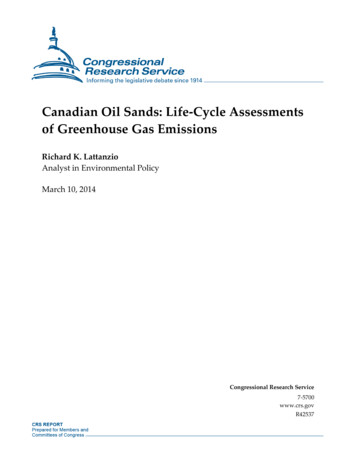
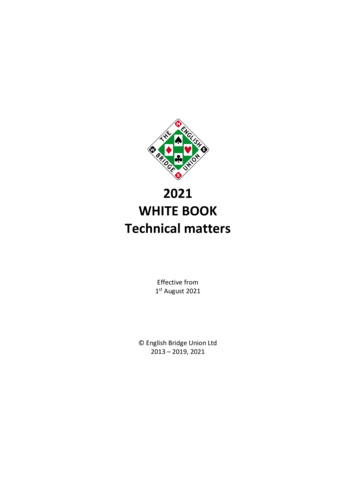


![[CLASS XII CHEMISTRY PRACTICALS]](/img/23/xii-chemistry-practical.jpg)
